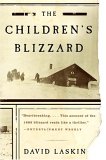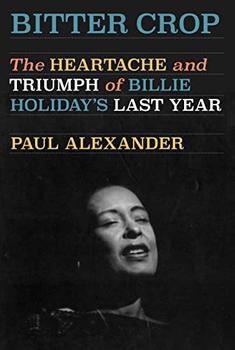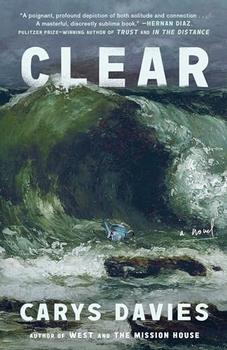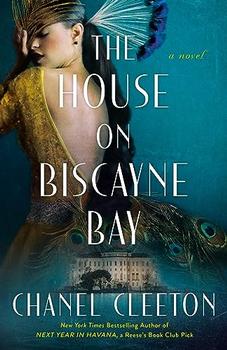Summary | Excerpt | Reading Guide | Reviews | Beyond the Book | Readalikes | Genres & Themes | Author Bio

Critics' Opinion:
Readers' Opinion:
First Published:
Nov 2004, 320 pages
Paperback:
Oct 2005, 336 pages
 Book Reviewed by:
Book Reviewed by:
BookBrowse Review Team
Buy This Book
Chapter One
Departures and Arrivals
Land, freedom, and hope. In the narrow stony valleys of Norway and the heavily taxed towns of Saxony and Westphalia, in Ukrainian villages bled by the recruiting officers of the czars and Bohemian farms that had been owned and tilled for generations by the same families, land, freedom, and hope meant much the same thing in the last quarter of the nineteenth century: America. Word had spread throughout Europe that there was land -- empty land, free land -- in the middle of the continent to the west. Land so flat and fertile and unencumbered that a family could plant as soon as they got there and harvest their first season. "Great prairies stretching out as far as one could see," wrote one Norwegian immigrant of the image that lured him and his wife and three sons to America in 1876, "with never a stone to gather up, a tree to cut down, or a stump to grub out -- the soil so black and rich that as somebody said, you had only ‘to tickle it with a plow, and it would laugh with a beautiful harvest.'" As for the sky above this land, there was no need to worry. Rain, they were promised, would fall abundantly and at just the right times. Winters were bright and bracing, snowfalls light and quick to melt. "Indeed, it may be justly claimed as one of the most beautiful climates in the world," proclaimed a pamphlet written, translated, and distributed by agents of one of the railroad companies that owned millions of the choicest acres of this land, "and one best adapted to the enjoyment of long and vigorous life." And so they came for land, freedom, and hope, some 16.5 million of them between 1850 and 1900, the majority of them never getting beyond the East Coast cities, but many hundreds of thousands, especially the Germans and Scandinavians, ultimately bound for the vast American grassland frontier bordered by the Mississippi to the east and the Missouri River to the west.
Gro Rollag was one of the seven hundred fifty thousand Norwegians who emigrated to America in the nineteenth century. She was twenty-two years old and a bride of several days when she left her family's farm in Tinn in the Telemark region of southern Norway in April 1873. Gro had married a strapping blond boy named Ole, three years her junior, from a neighboring farm. Rollag was his surname as well, since it was the custom in that part of Norway for families to take the names of the farms where they lived. In Tinn there were six Rollag farms scattered through the valley -- North Rollag, South Rollag, Center Rollag, and so on -- all of them small and niggardly in yields of barley, oats, potatoes, hay. Growing seasons were short this far north, crop failures all too common in chilly overcast summers, fields so pinched that only the most primitive tools could be brought in. "Our honeymoon took us to America," Gro Rollag wrote fifty-six years later with her dry humor, as if they might have chosen Paris or Nice instead. While the truth, of course, was that Gro and Ole left Tinn because the fields of the Rollag farms were being divided into smaller and smaller parcels every generation, because they didn't want to leave their children with less than they had, because in Norway only the firstborn sons inherited the arable valley parcels known as bonde gaard, and because Ole was facing five years of compulsory military service.
But it wasn't in Gro's nature to write this in the memoir she titled "Recollections from the Old Days." Nor did she mention how hard it was to leave behind this stunningly beautiful landscape at the beginning of spring -- the mountains rising sharply from the shores of a twenty-five-mile-long lake known as the Tinnsjo, the farms clustered on a level shelf of land at the head of the lake, the waterfalls gleaming on the sides of the mountains and feeding streams that merged into the broad Mana River, the red and white farmhouses scattered around the stately white church. Beauty was abundant and free in the countryside of Tinn -- but you couldn't eat beauty, and the beautiful farms were yielding less and less while the population steadily grew. But they were comparatively lucky in Tinn. Elsewhere in Telemark the farm fields had become so small from repeated division that farmers had to harvest the hay that grew on the thatch of their roofs and grow vegetables by spreading dirt and manure on top of rocks. It was a sad, haunted country for all its beauty. Men in the prime of their lives built their coffins and stored them inside until they were needed. "It was not a very pleasant thing to look at before you got used to it," recalled one Norwegian immigrant.
From The Children’s Blizzard by David Laskin. HarperCollins Publishers. Used by permission.





The House on Biscayne Bay
by Chanel Cleeton
As death stalks a gothic mansion in Miami, the lives of two women intertwine as the past and present collide.

The Flower Sisters
by Michelle Collins Anderson
From the new Fannie Flagg of the Ozarks, a richly-woven story of family, forgiveness, and reinvention.

The Funeral Cryer by Wenyan Lu
Debut novelist Wenyan Lu brings us this witty yet profound story about one woman's midlife reawakening in contemporary rural China.
Your guide toexceptional books
BookBrowse seeks out and recommends the best in contemporary fiction and nonfiction—books that not only engage and entertain but also deepen our understanding of ourselves and the world around us.